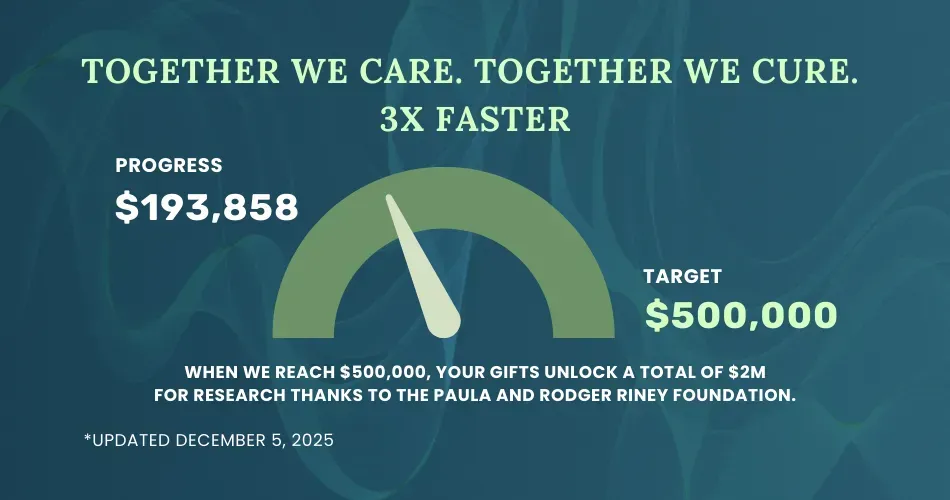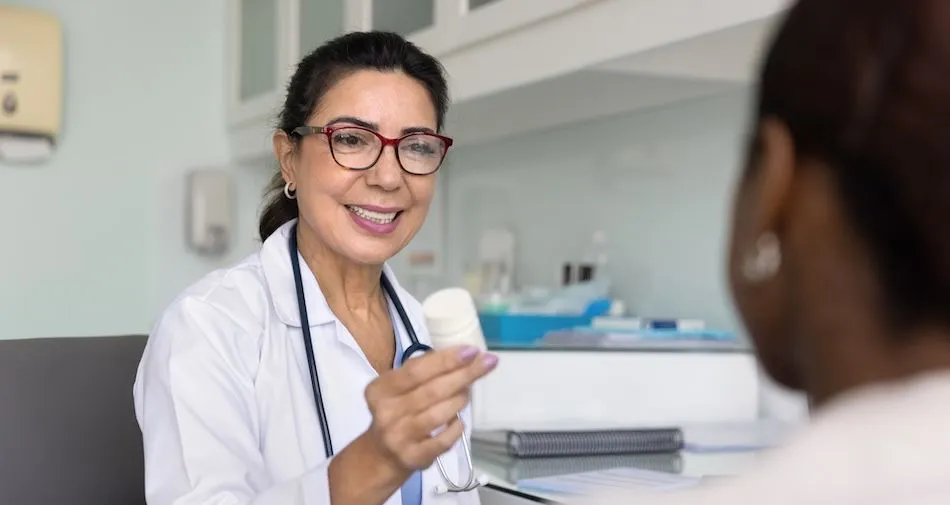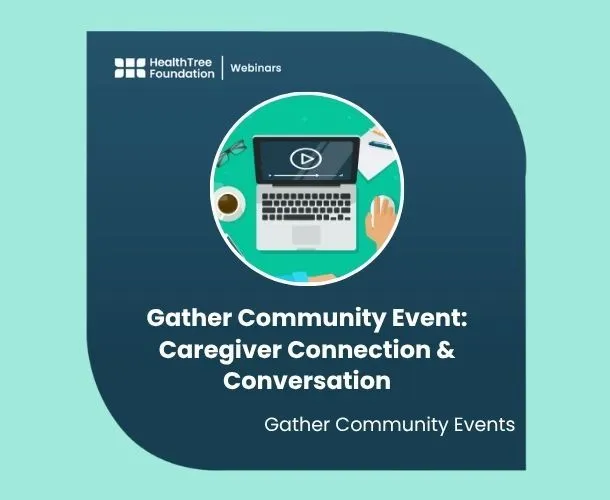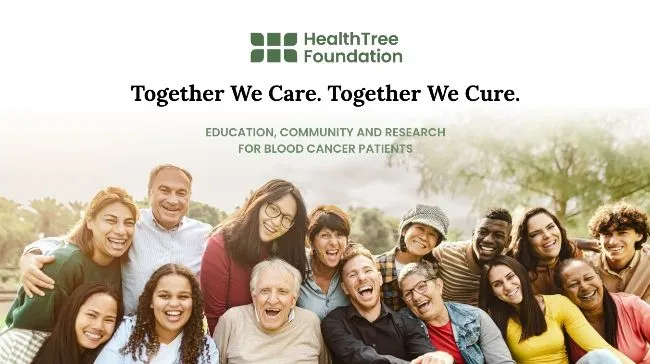The Latest in Amyloidosis Care and Research with Morie Gertz, MD, Mayo Clinic
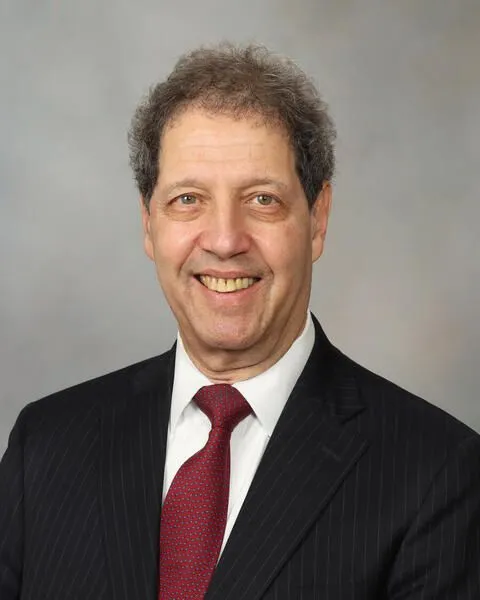
Episode Summary
Dr. Morie Gertz joins the HealthTree Podcast for Multiple Myeloma to share the challenges, treatments and futures of AL amyloidosis. He shares common treatments used in AL amyloidosis. He also reviews treatment questions now being studied in clinical trials, such as if anti-amyloid treatments can break up the damaging proteins, daratumumab use in amyloidosis, stem cell transplant in amyloidosis and a host of t-cell therapy clinical trials now opening in amyloidosis.
He also shares an invitation for patients to join his amyloidosis survey to better understand patient experiences getting their diagnosis. What symptoms led you to an amyloidosis?
Join Dr. Gertz and many other myeloma specialists complete this important research project.
Amyloidosis clinical trial topics discussed in the show include:
-
CAEL101-203: A PHASE 2, OPEN-LABEL, MULTICENTER DOSE SELECTION STUDY TO EVALUATE THE SAFETY AND TOLERABILITY OF CAEL-101 IN PATIENTS WITH AL AMYLOIDOSIS (targeting the amyloid proteins)
-
A PHASE 3, RANDOMIZED, MULTICENTER, DOUBLE-BLIND, PLACEBO-CONTROLLED, EFFICACY AND SAFETY STUDY OF BIRTAMIMAB PLUS STANDARD OF CARE VS. PLACEBO PLUS STANDARD OF CARE IN MAYO STAGE IV SUBJECTS WITH LIGHT CHAIN (AL) AMYLOIDOSIS (targeting the amyloid proteins)
-
A PHASE I-II TRIAL OF DARATUMUMAB FOR THE TREATMENT OF PATIENTS WITH AL AMYLOIDOSIS
-
PHASE 1B DOSE EXPANSION STUDY OF NXC-201 FOR THE TREATMENT OF PATIENTS WITH RELAPSED OR REFRACTORY AL AMYLOIDOSIS (CAR T Study)
Full Transcript
Jenny: Welcome to today's episode of the Health Tree Podcast for Multiple Myeloma. We will be covering a topic about amyloidosis today, which is sort of a relative of multiple myeloma, but definitely a separate disease. And with us today is Dr. Morie Gertz of the Mayo Clinic. Welcome, Dr. Gertz. We're so happy to have you. Before we get started, let me give an introduction for you.
Dr. Morie Gertz is the Roland Seidler Jr. Professor of the Art and Medicine and Chair Emeritus of the Department of Internal Medicine and Mayo Clinic in Rochester, Minnesota. He is a Master of the American College of Physicians. He is a Professor of Medicine and a Consultant in the Division of Hematology at Mayo Clinic.
His undergraduate degree was awarded with the highest distinction from Northwestern University, graduating Phi Beta Kappa. Dr. Gertz received his medical degree at CUM Laud from Loyola Medical School in Marywood, Illinois and was elected to the Alpha Omega Alpha, the Medical Honor Society. He completed a three-year medical residency at Rush Presbyterian St. Luke's Hospital in Chicago, Illinois, and was resident of the year for two of those years. He completed training in hematology and oncology at the Mayo Clinic and was awarded the Mayo Clinic's Distinguished Clinician Award for his contributions to patient care.
He served a one-year term as president of the Mayo Clinic staff, officers, and counselors and has served as Chair of the Division of Hematology and chair of the department of medicine at Mayo Clinic Rochester. He was the first treasurer of the International Society of Amyloidosis and International Myeloma Society. He has authored over 800 peer-reviewed publications and over 90 book chapters. And he serves on the editorial boards of Amyloidosis, the Journal of Clinical Oncology, Leukemia Lymphoma, Acta Haematologica and Clinical Lymphoma and Myeloma.
He is the co-editor of Neoplastic Diseases of the Blood. In 2019, the Mayo Clinic Department of Medicine awarded him its Lifetime Research Achievement Award. And he currently serves on multiple committees, including as the chair of the American Board of Internal Medicine for the Hematology Approval Committee, the Hematology Approval Committee, the Central Society for Clinical Research, and the International Society of Hematology.
So Dr. Gertz, we are so privileged to have you at the show today. We're just amazed at the work that you've done over so many years. It's just truly, truly incredible. So thank you for everything. We're here today to talk about amyloidosis. So let's talk a little bit about what defines AL amyloidosis.
Morie Gertz: Thank you for having me. As you noted, there is a close relationship between amyloidosis and myeloma and in a small proportion of myeloma patients, amyloidosis can be a complicating factor. In multiple myeloma, most patients are familiar with the free light chain levels. Those free light chain levels don't hurt you in any way. Those free light chains are markers of disease activity.
So if they're going down, you're responding to treatment. If you're stable light chains and you're probably in a stable plateau, if they're rising, likely problems lie ahead. But the proteins are nothing but a surrogate marker of myeloma activity. In amyloid, it's different. In amyloid, the light chains that are produced by the bone marrow plasma cells actually are toxic. Those light chains aggregate and deposit in the tissues and damage them, most prominently the kidney and the heart. And when light chains deposit in tissues and cause them to be damaged, that defines AL, which stands for light chain (amyloid light chain).
Jenny: Great definition. Now how frequently is it found in myeloma patients? How many myeloma patients have it? And do patients have AL amyloidosis without having myeloma?
Morie Gertz: So there's a lot of overlap and there's some arbitrary definitions. Probably in a full blown myeloma patient, the risk of amyloid less than 5%. It's not usually complicated. Amyloid is usually seen in patients with light chain MGUS (monoclonal gammopathy of undetermined significance). We estimate 3,000 - 5 ,000 patients are diagnosed annually. And so it's probably one fifth to one tenth as common as multiple myeloma, but one of the problems is it's a subtle diagnosis and the number diagnosed may not be the same as the number of patients who actually have the disease and can go undiagnosed indefinitely or for prolonged periods.
Most patients with myeloma know that one of the ways in which they assess the activity of their disease is by measurement of the light chains in the blood, the kappa and the lambda.
These light chains are very useful markers of disease activity, but in and of themselves aren't harmful to the patient. They're a surrogate for disease activity. But an amyloidosis, those light chain proteins are quite harmful. They're toxic. Those light chains deposit in the heart, in the liver, in the kidney, and in the nerve, causing those organs to become abnormal in their function and occasionally fail completely. And when light chains are toxic and deposit in tissues that's referred to as amyloid and their specific diagnostic techniques on biopsies that recognize the amyloid.
But the symptoms are quite nonspecific leading to a delay in diagnosis. The symptoms include fatigue, swelling in the feet, unexplained weight loss, shortness of breath.
And all of those are very nonspecific and are often caused by many more common disorders. And so when an internist sees a patient with fatigue or weight loss, they may undergo an evaluation for heart problems or unexplained cancer or absorptive issues. Amyloid would be very low on the list because only 3,000-5,000 individuals per year will develop it. And rarity makes it a challenge for someone to recognize such a rare disorder and that often has a consequence that being delay in diagnosis.
Jenny: Of course, it's so rare. That's similar to myeloma even, you you go in with back pain or you go in with fatigue and you go to chiropractor and they have no idea. They just think they need to adjust you or something. So it's very similar to that, but what are the risks of a delayed diagnosis if that happens? Because these proteins, like you said, are very toxic.
Dr. Gertz: So that's the problem is that over time, these proteins deposit and cause progressive loss of function of the heart, of the kidney, of the liver, of the nerve. When the diagnosis is delayed, there's ongoing depositing of these toxic proteins leading to progressive loss of organ function.
And the greater the deterioration in organ function, the more challenging it can be to stabilize and reverse the damage that occurs. Reversibility is part of amyloid, but sometimes if there's very far advanced disease, even with highly effective treatment, which we have, recovery can be a real problem. And one of the reasons why heart transplant and kidney transplant is used in amyloid successfully.
Well, that's in part because the diagnosis wasn't made until irreversible loss of function developed and that even with highly effective therapy, you couldn't get the organ to recover to its normal state.
Jenny: Well, it's amazing that it can recover or that transplants even possible. I think that's amazing, but obviously you don't want it to let to get to that point.
We're going to talk a little bit about this ability to move up a diagnosis and make a little better. So you did mention that organ function can be recovered in some circumstances, but others you can't. And that's why the timing of this is so critical. Do you want to go over what is traditional or current standard of care therapy look like for amyloidosis?
Dr. Gertz: So much of the treatment for amyloidosis is in common with all the therapies available for multiple myeloma because they both have the same underlying cause, the abnormal growth of clonal plasma cells in the bone marrow. That's definitional for both multiple myeloma and amyloidosis. And so the myeloma agents that are used to destroy the plasma cells are frequently used in amyloidosis. So it's very common in amyloid to use daratumumab, trade name Darzalex or Isatuximab or Revlimid (lenalidomide), Cyclophosphamide (Cytoxan), bortezomib, Velcade, and everyone's favorite, dexamethasone.
And so those are very typical treatments used in amyloidosis that abstracted from the myeloma space. And in fact, based on the tremendous success in myeloma, there are now exploratory trials looking at CAR -T for the treatment of patients with amyloidosis, bispecific antibodies for the treatment of amyloidosis as well. And of course, stem cell transplant, which has been a cornerstone platform for myeloma, has been used for over 35 years in the treatment of AL amyloidosis. So there's enormous commonality in terms of the effectiveness of the agents,
The administration to amyloid patients carries some very unique challenges because of the superimposed organs that aren't working quite right that makes the side effects and the profile very different and the ability to tolerate these medications quite a bit more challenging. We routinely look at FISH genetics in patients with amyloidosis because a small proportion will have high risk features 4;14 as well as minus 17 (deletion 17p).
But 11;14 (the translocation) seen in 15 % of myeloma patients is seen in nearly half of patients with AL amyloidosis. And it's important to know that because those patients are candidates for venetoclex therapy.
But I would say the highest risk feature in amyloidosis is not fish genetics. It's the extent of heart involvement.
Jenny: Fascinating. Okay. I didn't know that. We talked about all these standard therapies that you mentioned, the whole arsenal essentially in myeloma care is being applied to AL amyloidosis in addition to new bispecifics and CAR -Ts like you mentioned.
Are there any clinical trials that you want to focus on or you'd like to highlight?
Dr. Gertz: I think there's a couple. Three companies are actually looking at anti-amyloid antibodies, antibodies that actually dissolve the amyloid deposits. So I've been talking about destroying the plasma cells that make the amyloid.but haven't really addressed with you, what about the amyloid that's already in the tissue? What are we doing about that?
And so three trials are active in patients who have not been treated, combining standard chemo to stop production of amyloid, but with antibodies designed to remove amyloid deposits from within the tissues. And those are very exciting trials.
A second trial that we're looking at is of daratumumab therapy in amyloidosis, or Darzalex. So the current standard protocol is six months of chemotherapy followed by 18 months of daratumumab or Darzalex. There's a trial active that is actually trying to determine what is the right amount, right duration of Darzalex treatment. And so these patients are being randomized to 12 months of therapy - six with chemo, six additional of Darzalex or 24 months where there's 18 months of Darzalex.
And we're trying to determine, do people really need a full second year of Darzalex therapy or is that just going to increase the number of infections and copays and the like? And so that's two trials. But then again, the therapeutic trials of CAR T and by specifics are ongoing.
And it's important for patients to be aware of targeted immunotherapy approaches for patients with amyloidosis.
Jenny: Absolutely. I know people are looking at Darzalex and Revlimid being used as maintenance therapy (together). This second trial that you talked about talks about that. Like how long should you use Darzalex? Do you think for amyloidosis that you're thinking about more therapy is better?
Dr. Gertz: Generally speaking, I mean, of course this trial will try to figure that out for Dara, but the issue of maintenance is a lot more complicated in amyloid and myeloma because the biology of the plasma cell in amyloidosis looks a lot more like an MGUS plasma cell than a myeloma plasma cell.
High risk genetics is only seen in a very small proportion, not 25 % like it is in myeloma. The proliferative index, the rate at which the plasma cells grow is much, much lower in amyloidosis than it is in multiple myeloma. So there are fundamental biologic differences and where in myeloma, it's so clear that maintenance helps because the clone's going to regrow. That is not the case in amyloid.
We've had patients who've been transplanted who have crossed the 20 year mark disease free. Because those plasma cells don't regrow. It's like using chemo in MGUS.
You expect very long, durable responses. And so the question of maintenance therapy is not intuitively obvious. And that's why Merit's exploring. Just wanted to mention that the therapeutic trial, so antibody dissolving, duration of Darzalex, and then targeted immunotherapy for patients exhausted chemotherapy options.
Jenny: And can we talk about stem cell transplant for a little bit? You just mentioned that patients with stem cell transplant have very long and durable responses. Is that something that you always recommend?
Dr. Gertz: No, stem cell transplant was really the primary therapy, but with the successive introduction of highly effective chemo, first, bortezomib (Velcade), and then daratumumab (Darzalex), what we're doing is we're seeing such deep responses that we're able to give patients induction chemotherapy and possibly avoid stem cell transplant because stem cell transplant is much more toxic in amyloid patients than it is in myeloma patients because unlike myeloma, the amyloid population, have heart problems or liver problems or kidney problems that complicate transplant.
So where transplant was first line therapy up until five years, now we're re -exploring it and we're trying to determine whether only to be used in consolidation or if it's not necessary, if you achieve a complete response.
There is a national, a United States national trial sponsored by the Southwest Oncology Group with participation from ECOG that's going to look at induction therapy for half the patients will be transplanted, half the patients won't be transplanted. And hopefully we'll have a definitive answer about where and what is the role of stem cell transplantation now when we have highly effective chemotherapy.
Jenny: Well, that'll be a great trial. Let's talk about trials for a minute, because I know that finding patients to join these clinical trials is really the only path forward in terms of figuring out what's best for these patients with new therapies.
But as a very uncommon disease, even in multiple myeloma, it's tough to find these patients. So you talked about ECOG and the SWOG groups, and these are cooperative groups. Maybe you explain what these are, but these these cooperative groups who are running trials together because it's so challenging to find these patients.
Dr. Gertz: These are National Cancer Institute sponsored groups that are funded in order to advance therapy for all forms of cancer. Southwest Oncology Group (SWOG), ECOG is the Eastern Cooperative Oncology Group and the Alliance are the three largest multi-center national cancer institute sponsored and they are sponsoring trials in myeloma and really trying to move the needle and make it better for patients.
But of course that requires willingness to participate and enroll, often the willingness to be randomized to new treatment, which may be cutting edge and may be the next step forward. But we rely on patients' willingness both to improve their outcomes as well as to serve a societal need to keep improving outcomes for future generations.
Jenny: We’ve always advocated for clinical trial participation because this is why we have so many drugs available in multiple myeloma because patients are joining these trials.
And in my opinion, especially with something like AL amyloidosis, you really need an expert on your team. So this is one of the other reasons. Number one, the clinical trial availability is going to only be open at these academic centers.
And then experts like you are going to be knowing the nuanced treatment patterns and how to treat optimally. We always suggest that patients consult with experts like yourselves and look at these clinical trials as treatment options for even for a newly diagnosed patient, there might be a trial open. It's so critical.
Dr. Gertz: One of the nice things about clinical trials is that you'll often get your care from a thought leader in the field because they're the ones who sponsor these trials. In addition, the monitoring and the dose modifications are pre-specified. So you get very, very careful required monitoring, whether it's weekly or monthly, very clear instructions on how to minimize side effects if people get them. And so these clinical trials are far more detailed than clinical practice in terms of measuring the benefit, controlling bad side effects and ensuring that appropriate monitoring over time for safety purposes is being done.
Jenny: Well, I have participated in at least three clinical trials. I always suggest that patients consider that and they need to ask their doctor about what potential trials they could join at every stage in therapy. So thank you for running these trials and advancing the field. It's been so exciting in myeloma. Now it's been 14 years for me. And just to watch the progress is shockingly stunning.
And I'm so grateful and it makes me want to cry every time I think about it, what you're doing in this field. I look at your long history of dedication to this space and I'm just intensely grateful.
Dr. Gertz: Thanks. It's been a privilege all along. Plus you probably can imagine how I've seen everything introduced. So I was in practice for 20 years when thalidomide was introduced, 22 years when Revlimid was introduced, 24 years when Velcade was introduced, 35 when the first CAR -T came out.
So I mean, I've been able to see these things incorporated, the introduction of zoledronic acid and denosumab and antibiotic prevention, and it's all rolled in my journey.
Jenny: Thank you for starting on this journey for all patients. I just want to thank you on behalf of all patients.
Now we've talked a lot about clinical research and how important that is. Something that HealthTree has the capability of doing is also supporting real world data research. And I know a few years ago, real world data research was thought of as maybe it's not that accurate or not that complete. When we can pull electronic health records directly from a hospital now and aggregate them into a single patient profile with everything that's been in the EHR, patients aren't entering this data or anything like that.
It's totally different because then we can ask patients, well, what was your experience on these? And we really came to you saying, is there a need or something that you'd like to do with us? And we want to offer our services to you.
Maybe you can frame the real world data versus clinical data.
Dr. Gertz: So there's two aspects when we ask patients directly about outcomes. The first is that clinical trials for safety purposes have very strict eligibility, kidney function, how robust the person is, what their baseline blood counts are, kidney function, all of these are often used to exclude patients from clinical trial participation so that the patients who get treated may not be representative of what's going on in clinical practice in the community.
And so then the question comes up, are the published results of clinical trials applicable to me and my practice and my patients? And if the average age of a patient on a trial was 50, what does that mean to an 80-year-old who wants to receive the same treatment? The side effects are going to be comparable? How often will those, are they going to end up being hospitalized?
And so the real world is important because it's a much broader, more realistic cross-section of the true myeloma population than those patients who fulfill the criteria for clinical trial and maybe can afford to come to the medical center every month and stay in a hotel so there's economic things and have sufficient insurance.
There are a lot of issues that make differences between real world and clinical trials. But there's also the aspect of patient reported outcomes. So in the amyloid space, most of the physicians focus on what does the light chain level do and what's heart function do and how are your kidneys. But we don't really do a lot about - how you feeling today? And we want to know from patients, because it's critically important, just because the numbers are better, doesn't mean we've improved their lives.
At the end of this, of course, we want people to live longer, but with a meaningful quality of life, near normal activities of daily living. We want them to be able to take the grandchildren to Disney World. We want them to be able to go on a motor home vacation. And so for that, we need their input about how toxic has treatment been.
I mean, that helped us a lot in terms of understanding the correct dosing of dexamethasone. We want to know how much functional impairment they have from treatment.
Oftentimes there are economic barriers to acquiring medicines. I couldn't get a medicine I wanted simply because my out of pocket expense referred to now by the physicians as financial toxicity.
Having patient input about my activities of daily living. I can go out to the restaurant. I can drive and do my own grocery shopping. I can clean the house. I can iron. I can cut the grass. Those are relevant end points that no clinical trial captures because we're all focused on did the light chain go down and did the function improve? And we need to hear from patients these outcomes so we understand that while we're measuring some of the numbers
Are they feeling any better? Are they more functional? Have we served their needs? What I think is benefit and what patients think is benefit may not be the same.
An example would be, might see the numbers improve and say, boy, this dexamethasone's a great drug. And then the patient and their spouse say, I can't sleep. The mood swings are intolerable. My blood sugar is 600. If you keep me on dexamethasone, I don't know what I'm going to do. I'm going to need psychiatric hospitalization.
So although things are improved, you really haven't helped that patient. You need their input to guide you. And these surveys that HealthTree is sponsoring are invaluable and we'll end up publishing them so that other people in the community understand what are the real challenges our patients are facing from the activity of daily living, functional status, economics.
You know, it's not much of a benefit if you have to come into the clinic twice a week and you're never allowed to go away to a cabin for the weekend because you're just locked in to treatment. We have to do that and we can't do that without patients telling us what they're facing.
Jenny: It's so interesting because you'll go to the clinic and you have a few minutes with the doctor and you know, sometimes you just forget, you might have five different side effects and you're thinking about your top side effect. And so you talk about that during your clinic visit and it's well addressed and everything. And then you get home and you realize, I have these four other things that I never really shared. So it's a way of capturing that patient experience by line of therapy.
It's a way of assessing quality of life as well. But then we also are going to be very specific, like the survey that we're doing with you. You really had a very specific question, like what are patient experiences getting this late amyloidosis diagnosis? Did you have to go to a lot of different doctors? What symptoms brought you to the clinic?
And you crafted this question set that we then ran by some patients also to make sure that the patients understand what you're trying to ask in the first place before we send it out.
But let's talk a little bit about why you wanted to understand this.
Dr. Gertz: Well, as I talked about delayed diagnosis, there's obviously a gap in terms of affecting early diagnosis. And when we understand from patients, their journey, how many different doctors, how long it took for the onset of symptoms, what they were misdiagnosed as, what other treatments did they receive that were not effective because it wasn't the right diagnosis. Only then are we able to craft number one, an educational initiative targeting the right providers to say, here's when you need to think of amyloid because these are how the patients are going to come to you. That's one.
The second, when we understand the journey and that route, we now have the ability to affect electronic medical records. We have electronic medical records and maybe when the electronic medical record is, think if a patient has, let's say, lots of protein in the urine, is that going to translate then? You're gonna get a little dialogue box in your electronic medical record and say, protein in the urine, did you think of amyloid or multiple myeloma? And screen for that.
Check light chains, please. Or patient says they have shortness of breath and they can't breathe and the home doctor does an echocardiogram and it shows thickening of the heart. Will the electronic medical record be able to sync heart symptoms, heart thickening on echo and say, think about high blood pressure, think about amyloid. So there's ways to generate these. Once we understand how patients showed up in the first place and articulate for us their journey, how many doctors, how long, how many unnecessary tests.
We've had patients with heart amyloid pretty regularly undergo an angiogram, which is always normal. They get the angiogram, but not the heart biopsy. The heart biopsy would give the diagnosis, and they're in the cath lab as we speak, but they do the angiogram and it's negative.
The doctors say, the angiogram is normal. You don't have heart disease, but they did have amyloid heart disease.
But we need patients to validate and give us numbers. So we really need those patients to participate.
Jenny: So how we did this is we took your questions. We ran it by patients and advisory board. You have a leading amyloidosis program at Mayo Clinic that you've run for many years. There are other facilities that have some people that have experience in amyloidosis as well. So we included everyone that has that specialty and then shared this survey with a lot of different facilities in order to find the amyloidosis patients at all these facilities.
Can you talk about the difference between just trying to survey your own patients at Mayo versus including other potential research partners?
Dr. Gertz: The amyloid population that we see at Mayo is skewed because we're a referral center. And as a referral center, we tend to see much younger patients, 10 years younger than the national average, because younger patients are more willing to travel a distance than an older patient. We're seeing patients who are more internet savvy that find Mayo Clinic as a referral center. And internet savviness is associated with education level and income. And so the people who find the clinical trials and find where the expertise is, that's not representative of what's really going on.
So reporting patients only from Mayo Clinic, it absolutely is not going to be raw data that we want. It's going to be way too refined due to the biases inherentin patients who find and seek out and go to these, if you will, centers of excellence.
We need input from patients from the community.
Jenny: So we have an amyloidosis social media group called Health Tree Connect (https://healthtree.org/myeloma/connect/group/6BCbuRNotB8TYw1iEtxR). We have our own social media platform. Of course, we use regular social media like Facebook and Twitter and things like that. But we do have this specific group and patients can join this group.
Patients can register for this group as well to be alerted because we have a group that does regular webinars.(https://healthtree.org/myeloma/community/chapters/Amyloidosischapter)
There's actually a webinar today for the amyloidosis group that we're doing. And this recording will be posted later with that same group. But I'd like to invite all of the amyloidosis patients to participate in your survey because we really need as many patients as possible. We have 71 responses so far, which to me is a great number, but what if you had 200 responses? You could see better pattern recognition.
And on the follow up too, we are very happy to do social media education about amyloidosis or emails to nephrologists or other types of things that we learn out of this study that you could help craft and then we could help share.
I think this is a really group effort. We're happy to do this for you. We don't want to charge you to do this. We want you to accelerate this type of research as much as possible, as fast as possible.
Dr. Gertz: Given that the incidence of amyloidosis is 10 per million per year, 72 is a great number. There's no question about it, but I've never seen a trial criticized for having too many patients.
Jenny: Yes. Never been a problem. I think the more data, the better.
And we talked about what you're hoping to learn from this survey. I just want patients to know that we want them to participate.
Do you have any concluding remarks about the survey or about amyloidosis in general?
Dr. Gertz: Well, amyloidosis rare and I have my own biases, but this is an area where experience can make a difference. And so think at the very least for most patients having one confirmatory consult at a center that really sees a lot of it and therefore develops that comfort and a feel for the nuances of managing rare disorders and has a multidisciplinary team.
I'm a hematologist and that's great for myeloma, but for amyloid, I need help from neurologists, nephrologists, pathologists, cardiologists. You really need a big team to put it all together, optimize outcomes for patients.
And so I do think it's worth considering confirmatory consults for patients. And of course, as you've emphasized many times, the ability to participate in a trial that will advance knowledge in the area and will benefit successive generations of amyloid patients.
Jenny: Well, it's absolutely necessary. I mean, the Mayo Clinic had data as did the University of North Carolina that if you're seen by a myeloma specialist, you can live two to five years longer.
And then you think about amyloidosis and how special that is. You have to have an expert on your team. I mean, this is your life.
And these are not inconsequential organs that are being damaged. So you absolutely have to have a specialist like yourself on your team. Second opinions are always necessary, no matter how much you love your general oncologist or your local oncologist. It's absolutely needed. So we always stress that, but thank you just for everything you're doing in this space, how you're advancing the field, you're running clinical trials, you're doing supplementary research to find the answers to these questions. And it's just critical. So thank you for joining us today and sharing your experience.
We want to invite all patients that have amyloidosis to join this survey.
The amyloidosis trials, I will attach those as part of the transcript so patients can find amyloidosis trials that are relative to them and consider them in your care.
So Dr. Gertz, thank you so much for joining us today.
Dr. Gertz: Thank you all.
Jenny: We’re so happy to have you. And thanks to our listeners for listening and we look forward to our next podcast.
Trending Articles
Have Any Questions?
Thank you for your interest in the event. If you have any questions, we would love to help!
Feel free to give us a call or send us a message below.

Get In Touch With Us
1-800-709-1113
Support@healthtree.org
Get the Latest Waldenström's Macroglobulinemia Updates, Delivered to You.
By subscribing to the HealthTree newsletter, you'll receive the latest research, treatment updates, and expert insights to help you navigate your health.
Together we care.
Together we cure.
3x Faster.

